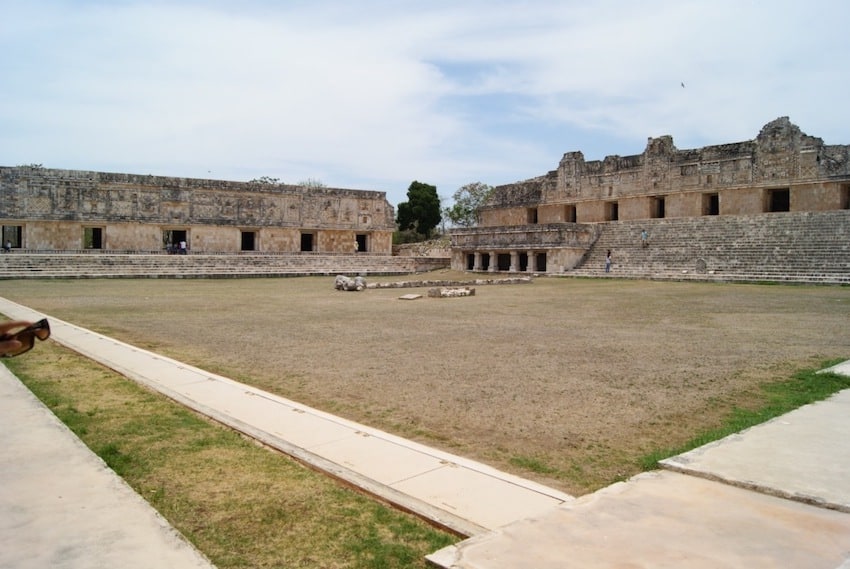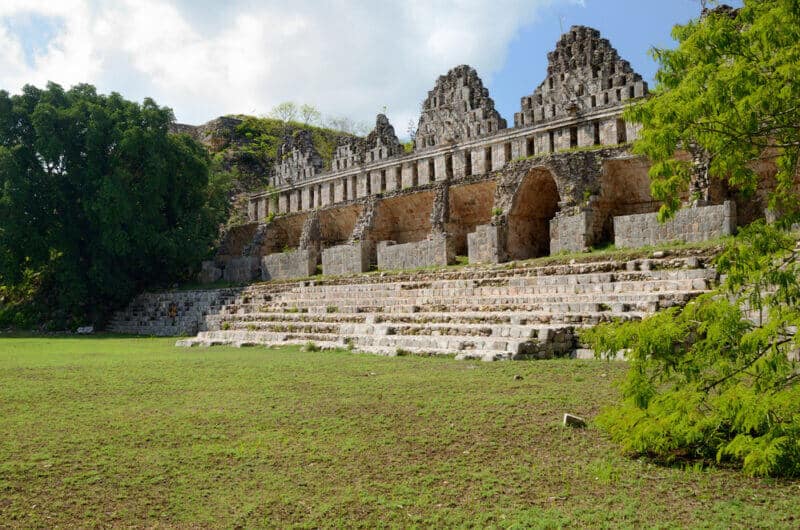A new section known as “El Palomar” has opened at the Uxmal archaeological site in Yucatán – a residence complex for the ancient Maya elite that showcases pre-Puuc Maya architecture spanning centuries of pre-Columbian civilization.
At the opening ceremony, Uxmal site director José Huchim Herrera explained that the complex dates from the Preclassic period, between 500 BC and 300 AD. It is significantly older than the main Uxmal complex – whose heyday was between 600 and 900 AD – therefore providing a valuable example of public space from this more remote period of Maya history

“What people can currently see in the Pyramid of the Soothsayer, the Quadrangle of the Nuns and the Governor’s Palace is the purest of the Puuc style of Uxmal, with great detail in the ornamentation; however, underneath those important buildings, there are previous stages,” Huchim said.
The newly-opened complex reveals a more somber style of architecture, best displayed in the vaults and undecorated friezes of the “Sunken Courtyard” – a quadrangle with newly-restored buildings on the south and east sides.
“There you can see changes in architecture, in construction systems,” Herrera said. “We are going to have a different reading of the archaeological zone. Why? Because of the architecture, because of its arrangement, because of its uncommon elements… This is new data for the Puuc route and the Puuc region.”
He explained that one example of this are the round structures found in the later section of El Palomar, which are believed to have emerged due to architectural influences from the north of Campeche. Uxmal also contains evidence that its inhabitants traveled as far as Veracruz and Central America.

“In Uxmal, we have obsidian, we have a fragment of pottery from Tikal, we have obsidian from Guatemala, we have obsidian from the Veracruz region, so that gives us an idea of the interactions that Uxmal had with other regions of the Mayan area,” Herrera said.
Besides El Palomar, archaeological rescue work is ongoing throughout Uxmal, as part of the Program for the Improvement of Archaeological Zones (Promeza) linked to the Maya Train. Last year, Herrera’s team uncovered a Maya stela depicting a god and goddess that is believed to represent the duality between life and death.
The National Institute for Archaeology and History (INAH) frequently touts the Maya Train as fulfilling a debt to Mexico’s historically marginalized Maya regions – although some Maya communities have protested the train’s impact on their environment and way of life.
At the El Palomar opening ceremony, Huchim and INAH head Diego Prieto Hernández participated in an event entitled “The Puuc and tourism in times of the Maya Train.”
The discussion centered on mechanisms to ensure that income from the Maya Train directly benefits Indigenous communities – for instance by providing opportunities for people to sell their products at train stations, or get jobs promoting local archaeological sites.
With reports from Milenio
